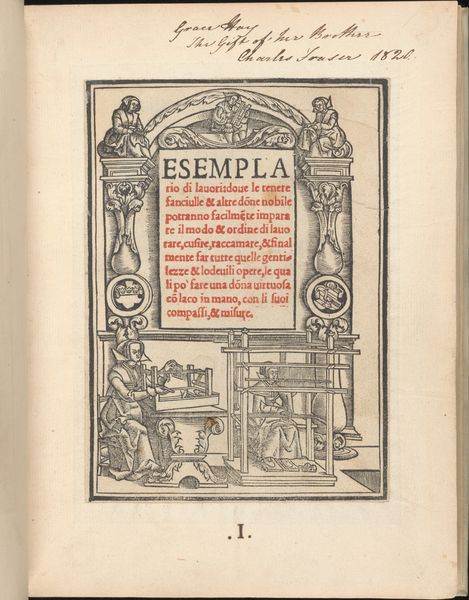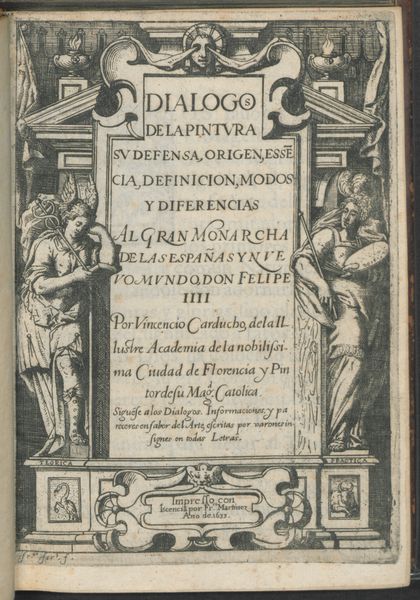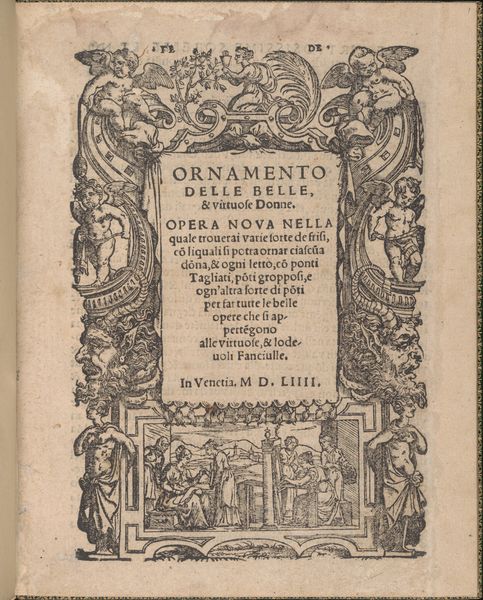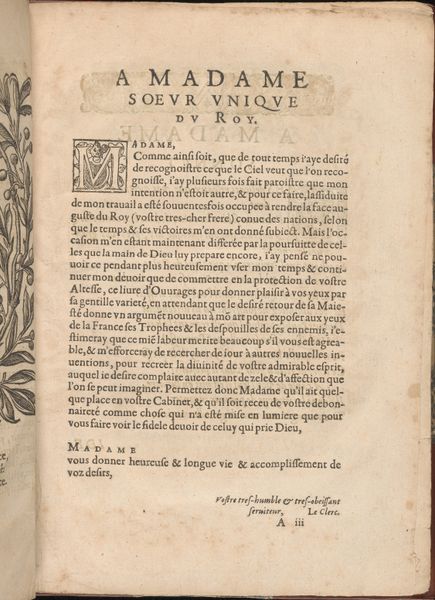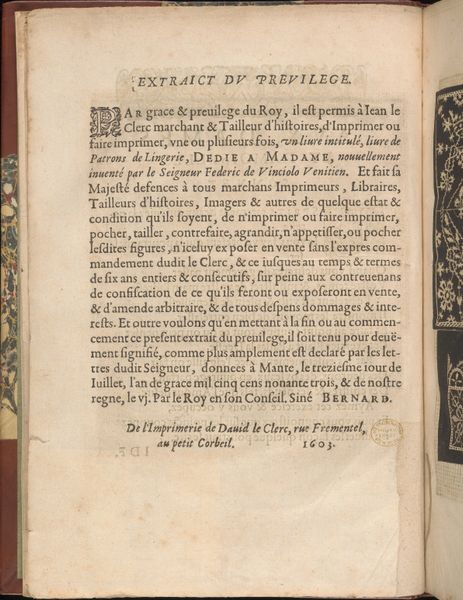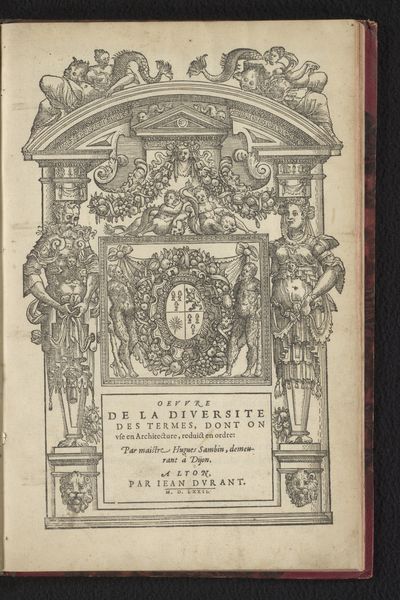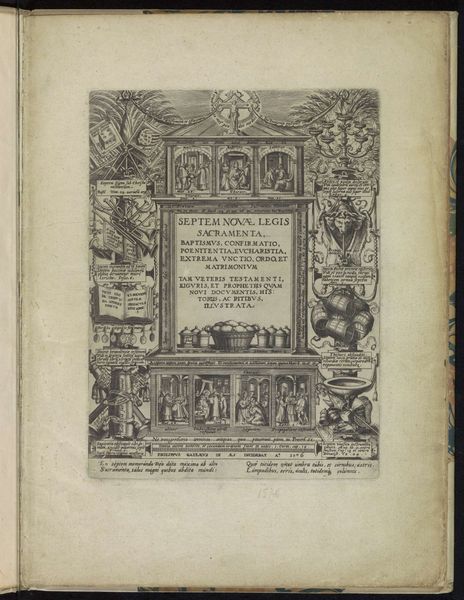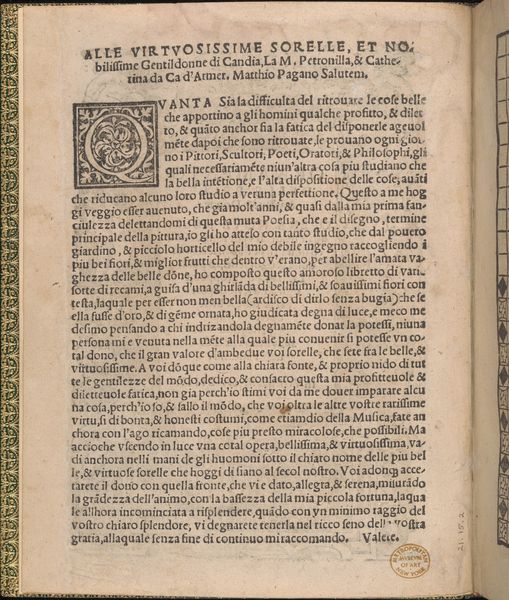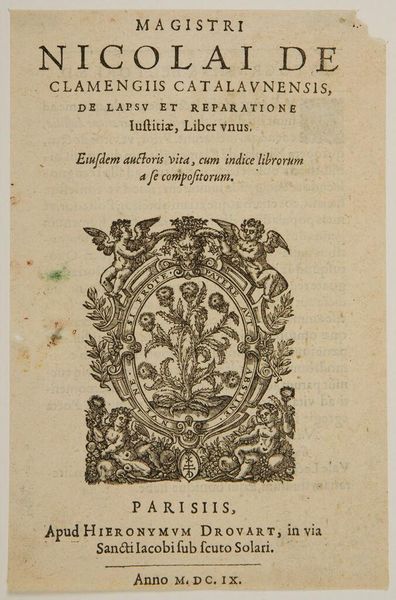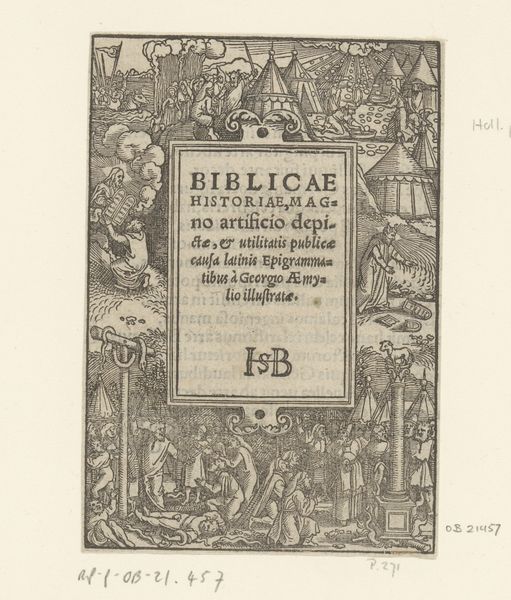
Libro quarto. De rechami per elquale se impara in diuersi modi lordine e il modo de recamare...Opera noua 1532
0:00
0:00
drawing, print, woodcut
#
drawing
# print
#
book
#
figuration
#
woodcut
#
italian-renaissance
Dimensions: Overall: 8 3/8 x 5 7/8 x 3/16 in. (21.2 x 14.9 x 0.5 cm)
Copyright: Public Domain
Editor: So, here we have a woodcut print from 1532 by Alessandro Paganino titled "Libro quarto. De rechami per elquale se impara in diuersi modi lordine e il modo de recamare...Opera noua." It looks like the title page of an instructional book on embroidery. What catches your eye when you look at this, how do you interpret it? Curator: The image is rich with visual symbolism of its time. Notice the elaborate architectural framework around the text – it isn't just decorative. The figures perched atop the columns, engaged in their crafts, speak to the dignity of labor. They are almost like tutelary deities overseeing the knowledge contained within. Editor: That's fascinating. I was focused on the two larger figures below, at their respective work stations. Curator: Exactly. Look closely at how the two women are positioned and at the objects they use. Consider the act of creating textiles and how thread can be viewed metaphorically. Do you see the potential for how the images depict not only craft but also connection? What might "Opera Noua," or new work, symbolize within a culture on the cusp of great change? Editor: So you are saying it might be more than just how to embroider but about larger concepts? Like societal changes in gendered work or even literacy and the democratization of knowledge? Curator: Precisely! Consider that books, especially instructional ones, were becoming more accessible. This image speaks to the cultural value placed on female artistry, a new appreciation. Perhaps Paganino is also reminding us of a history of ingenuity passed down through generations of women. Editor: That gives me so much more to think about than just the artistic style. It shows how one image can hold so much historical weight. Curator: Indeed. By examining the visual vocabulary, we decode the deeper meanings embedded in even seemingly simple images. There is something particularly pleasing to know these techniques are accessible, recorded and repeatable.
Comments
No comments
Be the first to comment and join the conversation on the ultimate creative platform.
